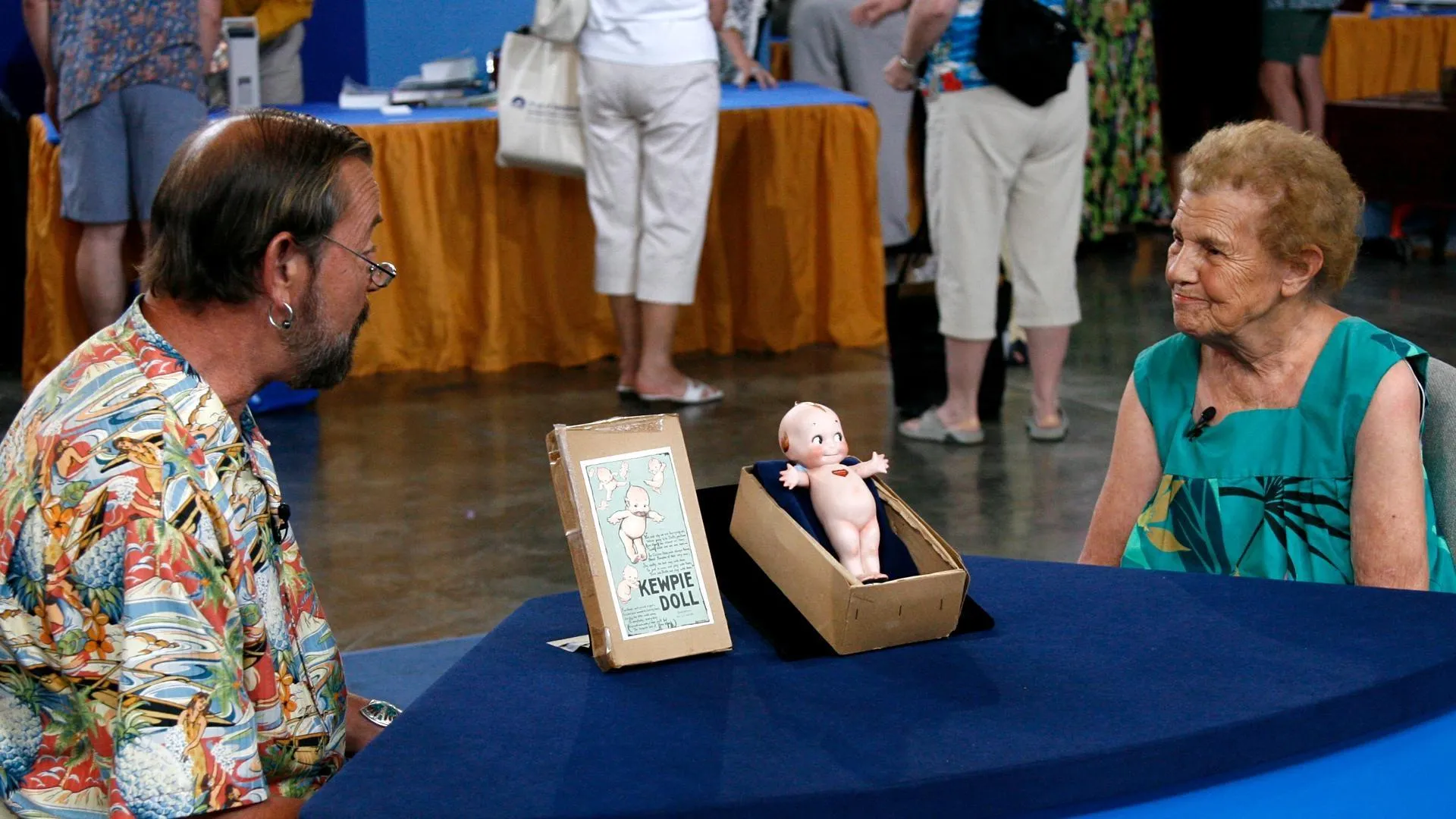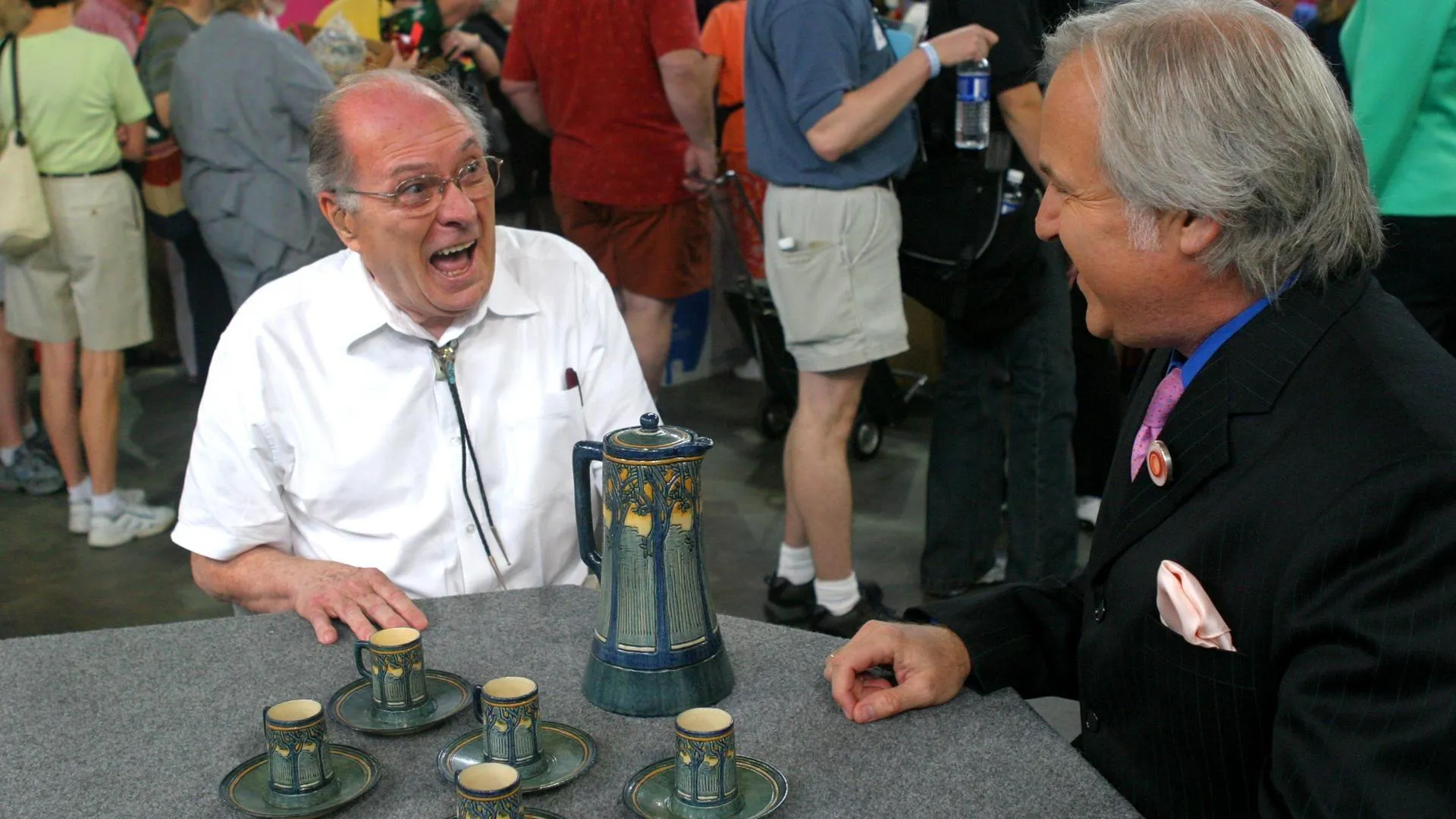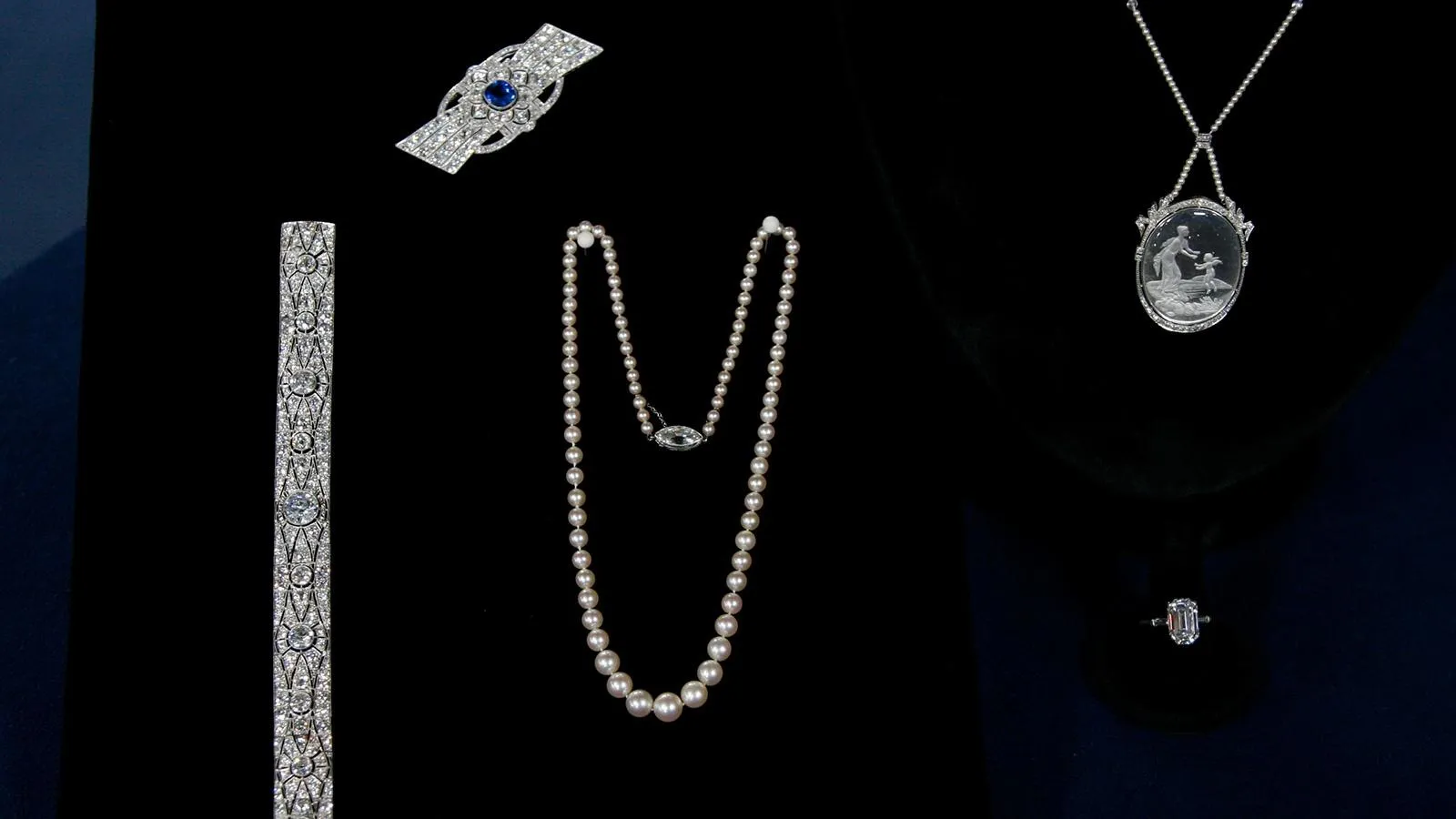GUEST: These are, it was in my family for a very long time. These were my great-great- grand-uncle's poi pounders. This is more traditional for poi pounding itself. I think these were used more for either softening meat or making condiments with leaves. We have a condiment in Hawaii, and it's called 'inamona, which made out of crushed kukui nuts. So, as a kid, I do remember my grandma using it as she got older. To soften her food, she used the smaller ones.
APPRAISER: They are poi pounders, and poi is central to the Hawaiian culture. Poi is made from the taro root. This one is technically not a poi pounder, but it is a masher. This is probably from the late 19th century. And it's probably a found piece, because it's seriously abraded on the outside. It's probably been abandoned somewhere, and the water has eroded it. And you can see the metal staining where it's been standing on something. This is also, the masher, shows a lot of wear. It's perfectly proportioned. This is for the first stage in the poi pounding. These are actually the poi pounders themselves.
GUEST: Okay.
APPRAISER: This is also, like this one, probably 19th-century. It's very, very difficult to tell exactly how old they are.
GUEST: Right.
APPRAISER: But given the wear and the aesthetics, I would think they're probably from the mid-19th century. This is the little beauty. This is made from a very fine-grained basalt.
GUEST: Yeah.
APPRAISER: It's extremely hard to find.
GUEST: Right.
APPRAISER: And would take a lot longer to make than something like this. It's many, many man hours.
GUEST: Right.
APPRAISER: And the aesthetics, as you can see, this is more gradual and softly cut underneath here. This has much more of a profile here with a beautiful mushroom shape on the top. This is an extremely rare poi pounder and was probably made for the elite. Have you any idea what they're worth?
GUEST: My mom said maybe $1,000 for a stone. I watched, uh, the ROADSHOW about seven years ago.
APPRAISER: Uh-huh.
GUEST: And somebody on the East Coast had, I think, an in-between size, and the appraiser at the time said $3,000.
APPRAISER: This one, the found piece, they're quite common. And I think probably between $400 and $600. This one, which is a super one, I think, probably around about $4,000 to $5,000. This little pounder, about $3,000 to $4,000. And this one, which is the real choice piece here, I think conservatively, I would say $6,000 to $8,000.
GUEST: Wow.
APPRAISER: And that would be on the retail market.
GUEST: It was all in a closet. And probably it'll get wrapped up and go right back into a closet.














